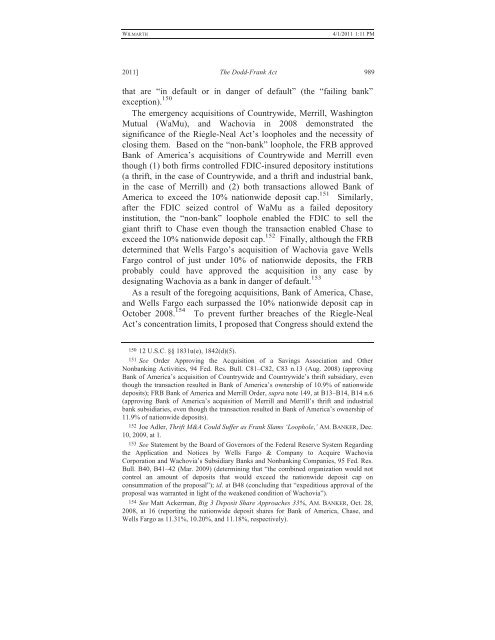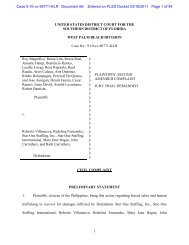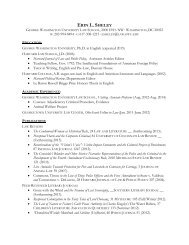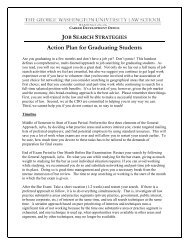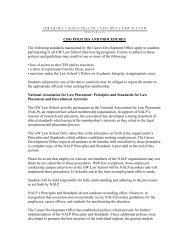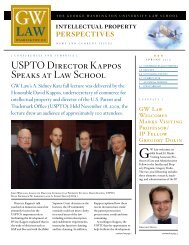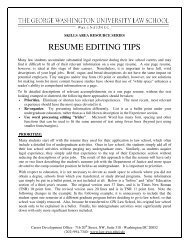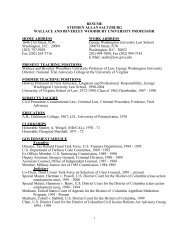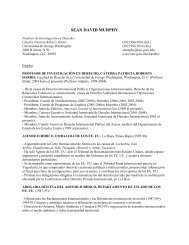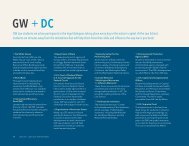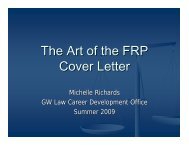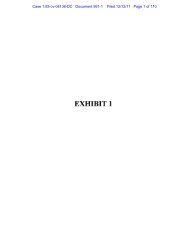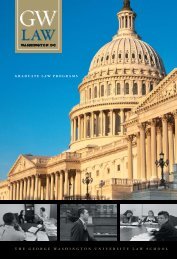CLE Materials for Panel #1 - George Washington University Law ...
CLE Materials for Panel #1 - George Washington University Law ...
CLE Materials for Panel #1 - George Washington University Law ...
You also want an ePaper? Increase the reach of your titles
YUMPU automatically turns print PDFs into web optimized ePapers that Google loves.
WILMARTH<br />
4/1/2011 1:11 PM<br />
2011] The Dodd-Frank Act 989<br />
that are “in default or in danger of default” (the “failing bank”<br />
exception). 150<br />
The emergency acquisitions of Countrywide, Merrill, <strong>Washington</strong><br />
Mutual (WaMu), and Wachovia in 2008 demonstrated the<br />
significance of the Riegle-Neal Act’s loopholes and the necessity of<br />
closing them. Based on the “non-bank” loophole, the FRB approved<br />
Bank of America’s acquisitions of Countrywide and Merrill even<br />
though (1) both firms controlled FDIC-insured depository institutions<br />
(a thrift, in the case of Countrywide, and a thrift and industrial bank,<br />
in the case of Merrill) and (2) both transactions allowed Bank of<br />
America to exceed the 10% nationwide deposit cap. 151 Similarly,<br />
after the FDIC seized control of WaMu as a failed depository<br />
institution, the “non-bank” loophole enabled the FDIC to sell the<br />
giant thrift to Chase even though the transaction enabled Chase to<br />
exceed the 10% nationwide deposit cap. 152 Finally, although the FRB<br />
determined that Wells Fargo’s acquisition of Wachovia gave Wells<br />
Fargo control of just under 10% of nationwide deposits, the FRB<br />
probably could have approved the acquisition in any case by<br />
designating Wachovia as a bank in danger of default. 153<br />
As a result of the <strong>for</strong>egoing acquisitions, Bank of America, Chase,<br />
and Wells Fargo each surpassed the 10% nationwide deposit cap in<br />
October 2008. 154 To prevent further breaches of the Riegle-Neal<br />
Act’s concentration limits, I proposed that Congress should extend the<br />
150 12 U.S.C. §§ 1831u(e), 1842(d)(5).<br />
151 See Order Approving the Acquisition of a Savings Association and Other<br />
Nonbanking Activities, 94 Fed. Res. Bull. C81–C82, C83 n.13 (Aug. 2008) (approving<br />
Bank of America’s acquisition of Countrywide and Countrywide’s thrift subsidiary, even<br />
though the transaction resulted in Bank of America’s ownership of 10.9% of nationwide<br />
deposits); FRB Bank of America and Merrill Order, supra note 149, at B13–B14, B14 n.6<br />
(approving Bank of America’s acquisition of Merrill and Merrill’s thrift and industrial<br />
bank subsidiaries, even though the transaction resulted in Bank of America’s ownership of<br />
11.9% of nationwide deposits).<br />
152 Joe Adler, Thrift M&A Could Suffer as Frank Slams ‘Loophole,’ AM.BANKER, Dec.<br />
10, 2009, at 1.<br />
153 See Statement by the Board of Governors of the Federal Reserve System Regarding<br />
the Application and Notices by Wells Fargo & Company to Acquire Wachovia<br />
Corporation and Wachovia’s Subsidiary Banks and Nonbanking Companies, 95 Fed. Res.<br />
Bull. B40, B41–42 (Mar. 2009) (determining that “the combined organization would not<br />
control an amount of deposits that would exceed the nationwide deposit cap on<br />
consummation of the proposal”); id. at B48 (concluding that “expeditious approval of the<br />
proposal was warranted in light of the weakened condition of Wachovia”).<br />
154 See Matt Ackerman, Big 3 Deposit Share Approaches 33%, AM. BANKER, Oct. 28,<br />
2008, at 16 (reporting the nationwide deposit shares <strong>for</strong> Bank of America, Chase, and<br />
Wells Fargo as 11.31%, 10.20%, and 11.18%, respectively).


